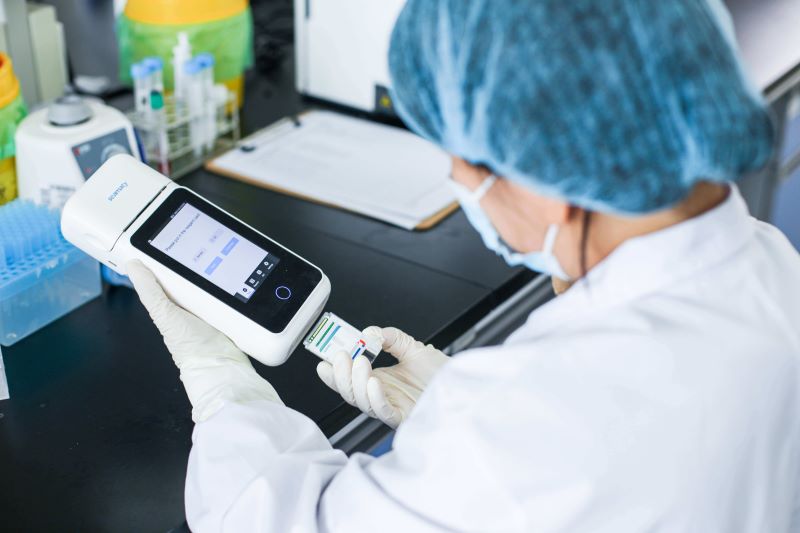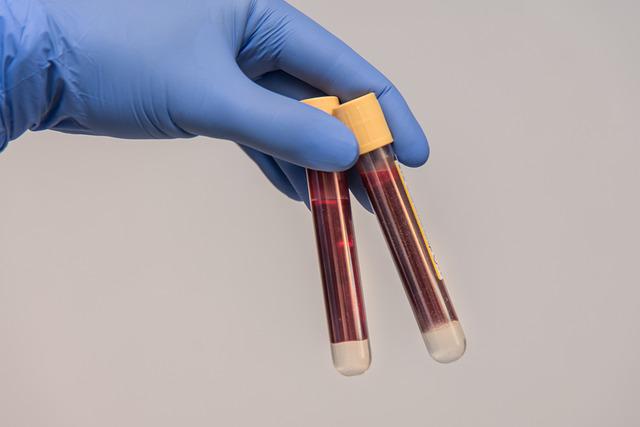release time:2023-04-04 13:53:00
As a healthcare facility, choosing the right blood gas analyzer can have a significant impact on the quality of care that you provide to your patients. Blood gas analysis is a crucial component of critical care, respiratory therapy, and other clinical settings, as it helps clinicians monitor the acid-base balance, oxygenation status, and ventilation of their patients. However, with so many different types of blood gas analyzers available on the market, it can be challenging to know which one is the best fit for your facility's needs.
In this article, we'll explore the key factors that healthcare facilities should consider when choosing a blood gas analyzer, including accuracy, speed, ease of use, cost, and integration. By the end of this article, you'll have a better understanding of what to look for in a blood gas analyzer and how to make an informed decision.
The first and most important factor to consider when choosing a blood gas analyzer is accuracy. Blood gas analysis results are used to make critical treatment decisions, and inaccurate results can lead to adverse outcomes for patients. Therefore, it's essential to choose a blood gas analyzer that provides accurate and reliable results.
There are several different types of blood gas analyzers available, including traditional laboratory-based analyzers, point-of-care analyzers, and handheld analyzers. Traditional laboratory-based analyzers tend to be the most accurate, but they also tend to be the slowest and most expensive. Point-of-care analyzers are faster and more convenient, but they may sacrifice some accuracy for speed. Handheld analyzers are the fastest and most convenient, but they may not be as accurate as the other types.
When evaluating the accuracy of a blood gas analyzer, it's also essential to consider how often it needs to be calibrated. Regular calibration is necessary to ensure accurate results, but it can be time-consuming and costly. Some blood gas analyzers require daily or weekly calibration, while others only need to be calibrated every few months.
The second factor to consider when choosing a blood gas analyzer is speed. In critical care settings, time is of the essence, and clinicians need to be able to obtain blood gas analysis results quickly to make informed treatment decisions. Therefore, it's essential to choose a blood gas analyzer that provides fast and timely results.
As we mentioned earlier, traditional laboratory-based analyzers tend to be the slowest, with turnaround times ranging from several minutes to several hours. Point-of-care analyzers and handheld analyzers tend to be faster, with turnaround times ranging from a few seconds to a few minutes. However, only a very few products can balance speed with accuracy, and the Seamaty SG1 blood gas analyzer is one of them.

Ease of Use
The third factor to consider when choosing a blood gas analyzer is ease of use. In busy healthcare settings, clinicians don't have the luxury of spending a lot of time on complicated procedures or difficult-to-use equipment. Therefore, it's essential to choose a blood gas analyzer that is easy to use and requires minimal training.
Different blood gas analyzers have different user interfaces and workflows, so it's essential to choose one that fits your facility's workflow and processes. Some blood gas analyzers may require more steps or more complex procedures, while others may be more straightforward and streamlined. It's also essential to consider the training and support resources available for the blood gas analyzer, as well as the availability of technical support and troubleshooting.
The fourth factor to consider when choosing a blood gas analyzer is cost. Blood gas analyzers can be expensive, with prices ranging from a few thousand dollars to tens of thousands of dollars. In addition to the upfront cost of the analyzer, there are also ongoing maintenance costs and consumables costs to consider.
When evaluating the cost of a blood gas analyzer, it's essential to consider the total cost of ownership over the lifespan of the analyzer. This includes not only the upfront cost but also the ongoing maintenance and consumables costs, as well as the cost of any necessary upgrades or replacements over time. It's also important to consider the return on investment (ROI) of the analyzer, in terms of the value it provides to your facility and the potential cost savings it can generate over time.
The fifth and final factor to consider when choosing a blood gas analyzer is integration. In today's healthcare environment, data integration and interoperability are essential for delivering high-quality care and improving patient outcomes. Therefore, it's essential to choose a blood gas analyzer that can integrate with your facility's electronic health record (EHR) system or other clinical information systems.
Integration can help streamline workflows, reduce errors, and improve communication between clinicians and other healthcare providers. It can also help facilitate data analysis and reporting, which can be useful for quality improvement initiatives and research projects. When evaluating blood gas analyzers, it's important to consider the integration capabilities and compatibility with your facility's existing systems.
Conclusion
4 factors for selecting a blood gas analyzer
Factor
Importance
Considerations
Accuracy
High
- Analytical performance (e.g., precision, linearity)
- Sample size and handling requirements
- Calibration and quality control procedures
Speed
High
- Turnaround time
- Throughput capacity
- Sample volume requirements
Ease of use
High
- User interface and software
- Maintenance and calibration requirements
- Training and support
Cost
Moderate to High
- Total cost of ownership (upfront and ongoing costs)
- Return on investment (ROI) considerations
- Budget constraints
Choosing the right blood gas analyzer for your healthcare facility is a critical decision that can have a significant impact on patient care and outcomes. By considering the factors of accuracy, speed, ease of use, cost, and integration, you can make an informed decision that meets your facility's needs and priorities.
When evaluating blood gas analyzers, it's also essential to consult with clinicians, laboratory staff, and other stakeholders to ensure that the chosen analyzer aligns with their needs and workflows. By working collaboratively, you can select a blood gas analyzer that provides the best value and outcomes for your facility and your patients.
▼Click to view the video introduction of Seamaty SG1 blood gas analyzer▼

2022-08-09
A blood chemistry analyzer allows vets to see various markers and increase harmful chemicals in animal blood. Every vet needs to diagnose the chemical composition of animal blood for accurate diagnosis and prescription.

2022-03-14
Currently, there are two main types of COVID-19 virus detection methods: one is based on nucleic acid detection at the molecular level; the other is based on immunological principles, mainly antigen detection and antibody detection.

2022-03-10
Unqualified specimens encountered in clinical testing work are mainly manifested in hemolysis, coagulation, contamination, insufficient or excessive collection volume, and incorrect identification.